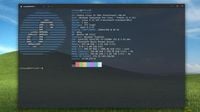On May 7, 2025, Microsoft officially announced that Fedora Linux is now supported as a distribution for its Windows Subsystem for Linux (WSL). This significant development marks the first time Fedora has had an official release tailored for WSL, following a preview period that allowed users to test it out. The Fedora Project has utilized WSL’s new tar-based architecture to create images, starting with Fedora 42, which has been available for a few weeks but was only recently publicized by Microsoft.
WSL enables developers to run both Windows and Linux simultaneously on a Windows computer without the need for a virtual machine. This integration has been a game-changer for many developers, allowing them to leverage the strengths of both operating systems seamlessly. Users can install Fedora Linux on WSL by entering the command wsl --install FedoraLinux-42 into PowerShell, making the installation process straightforward.
After installation, users can log in with their username. By default, new users have no password and belong to the wheel group, which grants them the ability to execute commands with elevated privileges using sudo. This is particularly beneficial for developers who need administrative access to install packages or modify system settings.
One notable aspect of the Fedora WSL image is that Flatpak support is not included by default. Users who require Flatpak will need to install it separately. The Fedora community is actively working to ensure that several popular projects and tools are available on the Fedora WSL image. These include widely used development tools such as GCC 15, LLVM 20, Golang 1.24, Ruby 3.4, PHP 8.4, and Python 3.9, which are already supported.
Microsoft has emphasized that the ongoing efforts from the Fedora community promise an even better experience in the near future. The Fedora team is also working on enabling graphical applications to utilize hardware acceleration on Windows, which would enhance the performance of GUI-based applications running through WSL.
In addition to the technical aspects, the Fedora Project’s approach to package management is another highlight. Fedora utilizes the DNF package manager, which is known for its efficiency and speed. Unlike some other distributions that rely on APT, Fedora’s DNF allows users to easily manage software installations and updates. For those transitioning from distributions like Ubuntu or Debian, the switch to DNF may require some adjustment, but the core functionalities remain similar.
As part of the broader efforts to enhance user experience, Microsoft has also outlined plans to optimize hardware acceleration for GUI applications running on Fedora within WSL. This development is expected to improve the overall performance and usability of graphical applications, making the Fedora experience on WSL more robust.
For users who are new to Fedora, Microsoft has provided resources to help them get started. The company has directed potential users to a website featuring tutorials, release notes, and tips for navigating the new environment. This support is crucial for those who may not have previous experience with Fedora but are eager to explore its capabilities.
The announcement of Fedora’s official support in WSL has been met with enthusiasm from the developer community. Many users appreciate the flexibility and power that comes with having access to a popular Linux distribution directly within their Windows environment. As Richard Devine, Managing Editor at Windows Central, pointed out, Fedora has long been a favorite among developers for its cutting-edge features and commitment to providing the latest versions of development tools.
As Fedora continues to evolve within the WSL framework, users can expect ongoing improvements and updates. The Fedora community is dedicated to enhancing the WSL experience, ensuring that users have access to the tools and resources they need to be productive.
In summary, the addition of Fedora Linux as an officially supported WSL distribution represents a significant milestone for both Microsoft and the Fedora Project. It not only expands the range of options available to developers but also underscores the growing integration of Linux within the Windows ecosystem. With its user-friendly installation process and robust package management system, Fedora is poised to become a popular choice for developers looking to leverage the best of both worlds.




